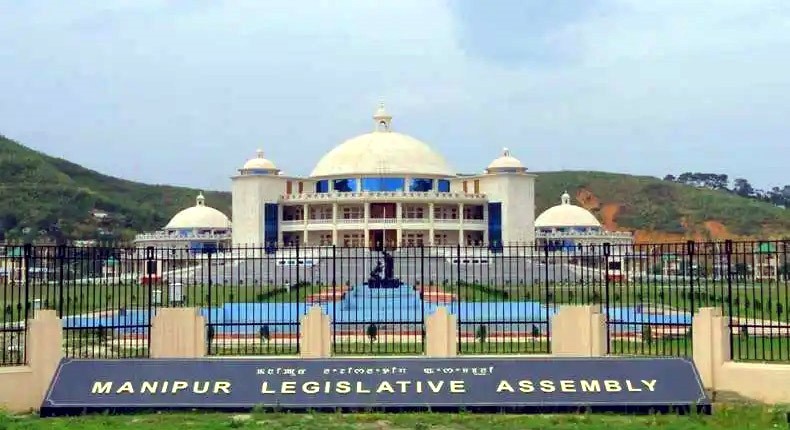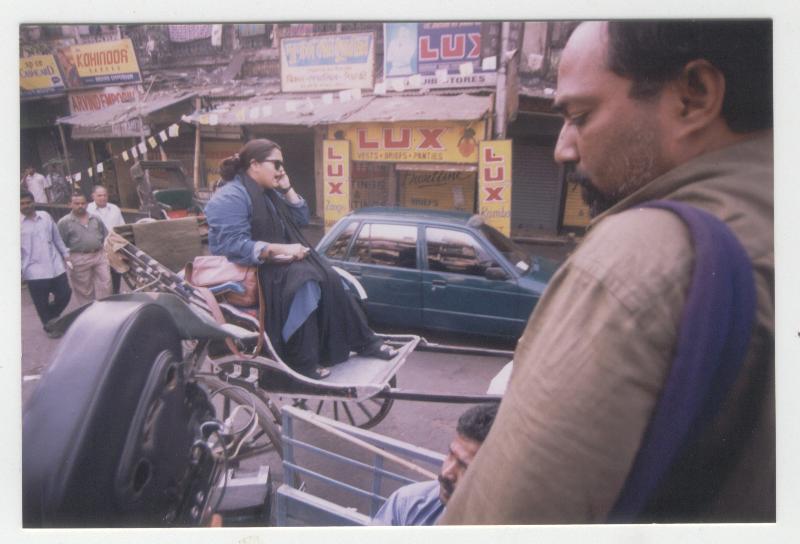Manipur limping backed from COVID-19 lockdowns has been paralysed by the violent confict between the Kuki-Zomi militants and Meiteis for more than a year since May 3, 2023, is hit hard once again by the heavy rainfall and floods after heavy damage due to the May 5 hailstorms and thunderstorms this year.
The Cyclone Remal has triggered heavy rainfalls from May 27 causing floods across Manipur. The heavy rainfall triggered by Cyclone Remal led to overflowing and breaching of embankments of the Imphal River and the Nambul River, submerging many areas, properties, and thousands of houses in the last week of May 2024.
Three people were killed due to incidents related to heavy rains and thousands were affected due to floods in Manipur’s Imphal valley region including Manipur Raj Bhavan.
According to reports, a 34-year-old man was killed and three others were injured in a landslide caused by heavy rain at Thonglang road in Senapati district on May 28. An 83-year-old woman drowned in the overflowing river in Senapati with one missing and nine injured. An elderly man died after being electrocuted when he stopped nearby an electricity pole while giving way for a passing vehicle on a waterlogged lane in Imphal West on May 28.
The Irang Bailey Bridge on NH-37, which connects Imphal and Silchar, collapsed in Taobam village in Noney district. One loaded truck along the NH-37 fell into the gorge due to landslide caused by heavy rainfall. Both the National Highways – NH-2, Imphal-Dimapur and NH-37, Imphal-Silchar have been cut off due the flash floods, landslides and mudslides along the National Highways, disrupting road communication of Manipur’s only lifelines connecting with the rest of the country.
Meanwhile, Manipur Water Resources and Relief & Disaster Management Minister Awangbow Newmai on May 30 informed the media that a total of 1, 88,143 people and 348 villages/localities have been affected, 24,265 houses damaged, two animals reportedly died while 18,103 stranded people were evacuated. He further informed that 56 relief camps have been opened, 434 hectares of crop areas affected while landslides occurred in several areas of hill districts.
However, Minister Awangbow while speaking to media at his office chamber located at New Secretariat, Imphal said that the State Government is putting maximum effort to control the flood. Due to the incessant rainfall since Monday (May 27) maximum areas of Manipur including hills and valley districts including Imphal East, Imphal West, Kangpokpi, Bishnupur, Noney, Churachandpur, Senapati and Kakching have been affected. All the affected areas of the rivers have been put under control, Awangbow added.
On May 30 evening, a meeting was conducted chaired by Chief Minister Nongthombam Biren at CM Secretariat. During the meeting agenda on resettlement of stranded people, supply of drinking water, food, shelter, and health were placed.
The Water Resources and Disaster Management Minister said that as preventive measures the state has announced two day public holidays on May 30 and 31 for schools and colleges.
For the stranded people staying at hotels and their respective residences, the government has been providing necessary assistance including food packets, drinking water and other basic requirements.
Minister Awangbow further informed that the Imphal River was breached at 18 places leading to overflowing, sliding and seepage. For the Nambul River, it breached at four places leading to overflow; one place at Tentha River and at two places at Khujairok River while Thongjaorok River was found to have breached at two different locations. Over flooding also occurred at the Khabi River, Leimakhong River, Mayai Loukhong River, Maklang-Nambol River, Kanarok stream, Kak stream and Oinam River etc.
A team of the National Disaster Response Force (NDRF) arrived in Imphal by a special Air Force flight around 10 pm on Wednesday (May 28) to lead the rescue operations. The Indian Army and Assam Rifles are also taking part in rescue operations and in sealing the breaches of river banks.
Meanwhile, issuing a statement, Manipur Chief Minister Nongthombam Biren said, “Due to breach in riverbanks in several areas, many people and livestock have been affected. All authorities concerned, including State Government officials, Security and NDRF personnel and local volunteers, are working tirelessly to provide assistance to the affected people. Those stranded are being relocated to safe areas by boats.”
Notably, Manipur Water Resource Minister Awangbow Newmai on May 30 further said the present flood is due to overflowing of rivers from unexpected areas and improper drainage of Waishel Maril in municipal areas.
However, here some pertinent questions can be asked. Are the causes of present floods in Manipur as simpleton as overflowing of rivers and improper drainage of Waishel Maril? Or is it just an impact of wolrd climate change? Are not the inhabitants across Manipur responsible for the floods? Is it just another unavoidable flood? Is not the weather forcast enough to take precautions to reduce flood havocs? Has the Government prepared enough to avoid floods though the Cyclone Remal is unavoidable? Are disaster preparedness and relief efforts of the Government adequate?
No doubt, the Manipur Government is working hard to control the flood and help the affected people in the immediate aftermath of floods triggered by the Cyclone Remal.
However, despite early warnings issued by Indian Meteorological Department, the government’s response to the imminent disaster was not evident except unpreparedness and a lack of proactive measures before the disaster sets in.
The grim reality is that many parts of Manipur are submerged, leaving numerous families homeless and in dire need of assistance with houses submerged and basic amenities disrupted, the direct affected residents are hard to receive immediate reliefs. Many residents cannot access to basic needs for survival such as foods and drinking water, and electricity. The relief camps established in the aftermath of the Cyclone Remal and floods are not run efficiently failing to provide meaningful service to the victims.
Majority of the State’s populace are also indirectly hit hard in many fronts. As the main market places of the State are submerged and non-operational, and road communications are disrupted, the residents of Manipur are short of essential commodities including foods, drinking water and medicines. Even availability of refilled LPG cylinders becomes a problem while power supply has also been cut off in many areas. Absence of supply lines of essential goods in the emmediate aftermath of such disaster shows another lack of preparedness on the side of the government.
The State Government’s present firefighting approach is for the immediate aftermath of the cyclone and flood but not for a long term solution of floods in the State.
This is not the first time the Bharatia Janata Party (BJP) government in Manipur under the leadership of Chief Minister Nongthombam Biren facing floods in the State but also in 2018 during their first term. One of the worst floods the State experienced in the last century was in 1989.
Therefore, the State Government must consider this year’s Cyclone Remal-triggered heavy rainfall and floods as another wake-up call to always remain prepared and improve disaster management, and to prevent floods.
Many will point out that the causes of landslides, mudslides, flash floods; river overlows, etc. are due to deforestations for many illegal purposes including poppy plantations; improper and unscientific cutting of mountains for expansion and construction of highways; siltations and non-biodegradable pollutants particularly plastic bottles and containers clogging the flow of drainage and rivers.
Allowing rivers to run at a level above roofs of houses due to decrease in the depth of river beds is also one of the causes of frequent floods due to river overflows and breaches of embankments.
Repalcement of traditional drainage system of Iram, Lairam, Khonglam and Khongbal which were about 6 to 20 feet wide depending on the areas with modern RCC drains of about 2 to 5 feet wide since mid 1980s is also one of the major causes of flash floods.
Abolishment of community ponds and other water bodies in the name of development projects is also another cause. Decrease in wetlands which earlier served as water reservoirs is also one of the causes of flash floods in the State.
Engineers, scientists, town planners, policy makers need to take the ancient and traditional knowledge of Manipur into account for maintainance of rivers and wetlands. They should understand the riverine systems in Manipur. Regular cleaning of rivers and community water bodies was a regular traditional practice. Historically, it is also well known that Manipuri civilisation and Manipur valley was developed by draining out water. The knowledge and practices of water management was well documented in Puya, archaic manuscript. The puya about the water management of Manipur is called Tutenglon. Engineers, scientists, town planners, policy makers need to study Tutenglon also to help make a holistic policy of water management and flood control in Manipur.












